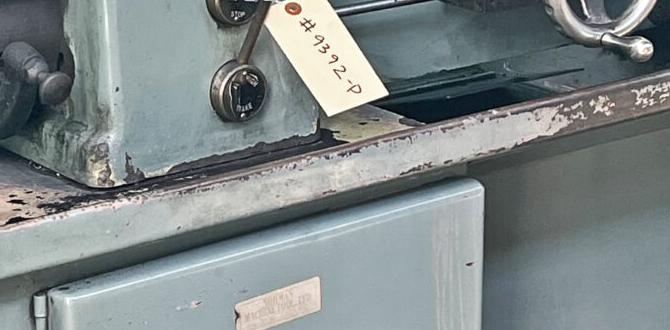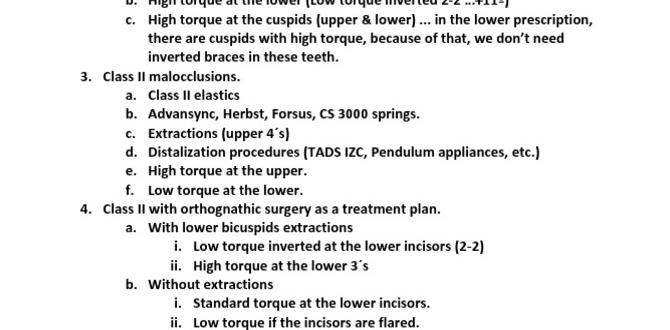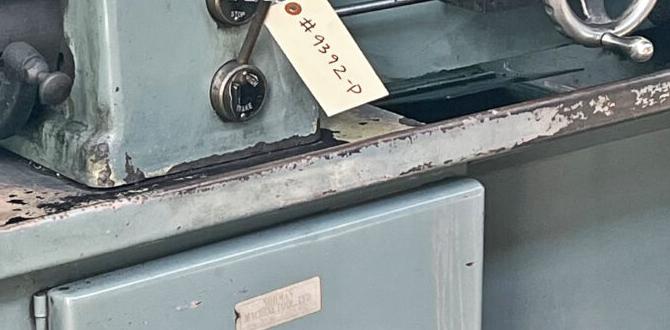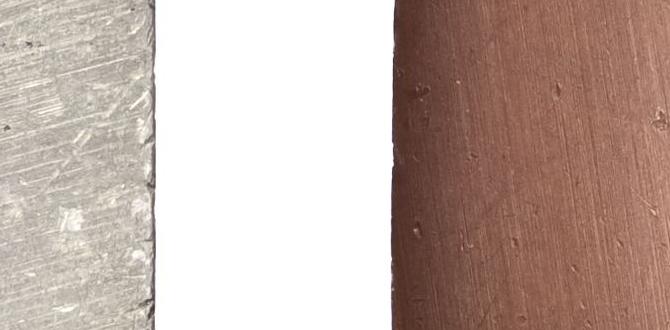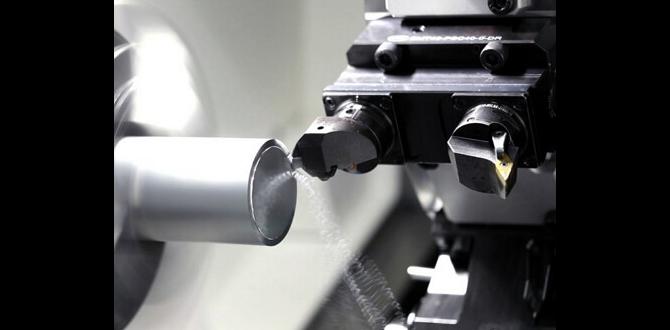Have you ever thought about how long your milling tools last? It might surprise you that the right techniques can really extend their life. Imagine being able to use your tools for longer, saving time and money on replacements. That’s a game changer!
Milling tools are important for many industries. They help shape materials into useful parts. But did you know that a tool’s life can be greatly increased with some simple techniques? With just a few changes, you can make a big difference.
Many people don’t realize that how they use and maintain their tools matters. For example, keeping them clean can prevent wear and tear. How cool would it be to get more out of the tools you already have?
In this article, we’ll explore several effective milling tool life extension techniques. You’ll find tips that are easy to follow and can make a big impact. Are you ready to learn how to make your milling tools last longer? Let’s dive in!
Milling Tool Life Extension Techniques: Enhance Durability & Performance

Milling Tool Life Extension Techniques
Milling tools are essential for precision work. Do you know simple ways to make them last longer? First, regular maintenance helps prevent wear. Using the right cutting speeds also reduces damage. Adjusting the feed rate keeps tools sharp. Plus, choosing the right material for the job is crucial. Fun fact: A well-maintained tool can last up to three times longer! Implementing these techniques can save time and money while improving work quality. Isn’t that impressive?Understanding Tool Wear Mechanisms
Types of wear: flank wear, crater wear, and chipping. Factors affecting tool wear: material, cutting conditions, and tool geometry.Tool wear happens in three main ways: flank wear, crater wear, and chipping. Flank wear is when the sharp edge gets dull from rubbing against the material. Next is crater wear, which looks like a tiny moon crater on the tool. Finally, chipping happens when bits break off, like bad potato chips! Several things can speed up wear, including the tool material, cutting conditions, and its shape. Remember, a happy tool lasts longer!
| Type of Wear | Description |
|---|---|
| Flank Wear | Dulling of the cutting edge from friction. |
| Crater Wear | Small pits forming on the tool surface. |
| Chipping | Breakage of tool edges or corners. |
Material Selection for Enhanced Tool Life
Comparison of tool materials: carbide, highspeed steel, and cermet. Recommendations for specific applications based on material properties.Choosing the right material for your tools can make a big difference in their lifespan. Let’s compare three popular types: carbide, high-speed steel (HSS), and cermet. Carbide is tough and lasts long, like a superhero in the tool world. HSS offers flexibility and is perfect for general tasks. Cermet combines the best of both, offering wear resistance and strength like a tool that just completed a triathlon!
| Material | Durability | Best Use |
|---|---|---|
| Carbide | High | Heavy machining |
| High-Speed Steel | Medium | General machining |
| Cermet | High | Hard materials |
For tough jobs, stick with carbide; it’s like a trusty sidekick. For everyday tasks, HSS is your go-to. If you’re working with hard materials, pick cermet for a power boost. Choosing wisely can help you extend tool life and get more from your investments!
Optimizing Cutting Parameters
Importance of cutting speed, feed rate, and depth of cut. Techniques for finding optimal parameters to minimize wear.Choosing the right cutting speed, feed rate, and depth of cut is key for tool life. These factors make a big difference in how long a milling tool lasts. Some quick tips include:
- Keep cutting speeds moderate to reduce heat.
- Adjust feed rates based on material type.
- Use shallow cuts to lessen wear.
Finding the best parameters helps lessen wear on your tools. Experimentation and adjusting settings can lead to longer tool life. This saves time and money in the long run.
Why is cutting speed important?
Cutting speed affects heat and wear on the tool. If it’s too high, the tool can overheat and break. Balance is crucial for best results.
How does feed rate affect machining?
Feed rate controls how much material is removed. A suitable rate improves efficiency and tool life. Too fast can cause damage, while too slow can waste time.
What is the depth of cut?
Depth of cut is how deep the tool goes into the material. Shallow cuts reduce stress on the tool, extending its life. Adjusting this can bring big gains in durability.
Cooling and Lubrication Strategies
Types of coolants and lubricants: oilbased vs. waterbased. Effects of coolant application methods on tool life.Coolants and lubricants are like superheroes for milling tools. They help keep tools cool and fight friction. There are two main types: oil-based and water-based. Oil-based coolants are thicker and stick better, while water-based ones are easier to clean up. How you apply these coolants matters too! Spraying them right on the tool can double its lifespan. Think of coolants as the refreshing drinks that keep your tools happy while they work.
| Type | Benefits |
|---|---|
| Oil-Based | Good for lubrication, lasts longer |
| Water-Based | Cooler, easy to clean |
Monitoring and Predictive Maintenance
Importance of monitoring tool condition during machining. Utilizing technology: sensors and data analytics for predictive maintenance.Keeping an eye on milling tools during work is crucial. It helps spot issues before they become big problems. Technology makes this easier. Sensors can track the tool’s condition in real-time. This data helps predict when a tool might fail. Predictive maintenance saves time and money by preventing unexpected shutdowns.
- Tools last longer with proper monitoring.
- Early warnings allow for quick fixes.
- Data analytics find patterns in tool wear.
Why is monitoring tool condition important?
Monitoring tool condition is important because it helps prevent costly breakdowns and keeps operations running smoothly.
Training and Best Practices for Operators
The role of operator skill in maximizing tool life. Recommended best practices for setup and operation.The skills of the operator play a major role in making tools last longer. Operators who know their machines can boost tool life significantly. It’s like knowing the secret recipe for the perfect cookie! To get the most from your milling tools, follow some best practices.
| Best Practices | Description |
|---|---|
| Proper Setup | Ensure tools are fixed securely to avoid wobbles. |
| Correct Speeds | Choose the right speed and feed rate for each material. |
| Regular Maintenance | Keep machines clean and check for wear and tear. |
Following these steps can help tools perform better and last longer. Remember, an operator’s skill is like a superhero cape— it can truly save the day!
Case Studies: Successful Tool Life Extensions
Realworld examples of implementations of life extension techniques. Analyzing results and improvements in productivity and costefficiency.Companies have found clever ways to make their milling tools last longer. One factory, by changing cutting speeds, increased tool life by 30%. More lifespan means less time spent replacing tools. Another example shows a company using special coatings. They reported 15% more efficiency and saved money. These cases prove that simple changes can lead to big gains in productivity and cost savings.
Why is tool life extension important?
Extending tool life saves money and time. It helps keep machines working better and longer. This means production stays steady and costs drop.
Key benefits of tool life extension:
- Reduced costs
- Less downtime
- Improved quality
Conclusion
In conclusion, extending milling tool life is important for cutting costs and improving efficiency. You can apply techniques like proper tool maintenance, optimal cutting speeds, and using the right materials. Remember, regular checks help catch issues early. For more tips, explore resources on machining best practices. Taking these steps will help you achieve better results in your projects!FAQs
Sure! Here Are Five Related Questions On The Topic Of Milling Tool Life Extension Techniques:Milling tool life extension techniques help our tools last longer. We can keep them sharp by using special oils or coolants. Taking breaks during work helps too. You should also inspect the tools regularly. This way, we save money and time!
Sure! Please provide the question you would like me to answer.
What Are The Common Factors That Influence The Wear And Life Of Milling Tools During Machining Operations?Milling tools wear down because of heat, pressure, and the type of material they cut. If the tool runs too hot, it wears out faster. Harder materials can be tougher on the tools. Using the right speed and feed also helps them last longer. Keeping tools clean and sharp makes a big difference in how long they last.
How Can Proper Coolant Application And Temperature Control Help Extend The Life Of Milling Tools?Using the right coolant and keeping the temperature steady really helps milling tools last longer. Coolant is like special water that helps cool tools and keep them from getting too hot. When tools get hot, they wear out faster. If we control the temperature and use coolant well, we protect the tools and save money. This means we can keep using them for a long time!
What Role Does Tool Geometry Play In Enhancing The Durability Of Milling Tools In Various Materials?Tool geometry is how the shape and angles of a milling tool are designed. The right shape helps the tool cut better and last longer. If we make the edges sharp and strong, the tool won’t wear out as quickly. This means we can use it on different materials without breaking it. Good tool geometry helps us do our work faster and keep tools in good condition.
How Can The Use Of Advanced Coatings And Surface Treatments Improve The Performance And Longevity Of Milling Tools?Advanced coatings and surface treatments help milling tools last longer. They make the tools tougher and less likely to break. These special layers also help the tools cut faster and smoother. When we use them, we can get more work done without replacing the tools often. This means saving money and time!
What Are Some Best Practices For Optimizing Machining Parameters, Such As Feed Rate And Spindle Speed, To Maximize Milling Tool Life?To make your milling tools last longer, you can follow some simple steps. First, use the right feed rate, which is how fast you move the material. Not too fast and not too slow! Next, choose the right spindle speed, which is how fast your tool spins. Testing different speeds and rates helps you find what works best. Lastly, keep your tools clean and check them often to keep them in good shape.

